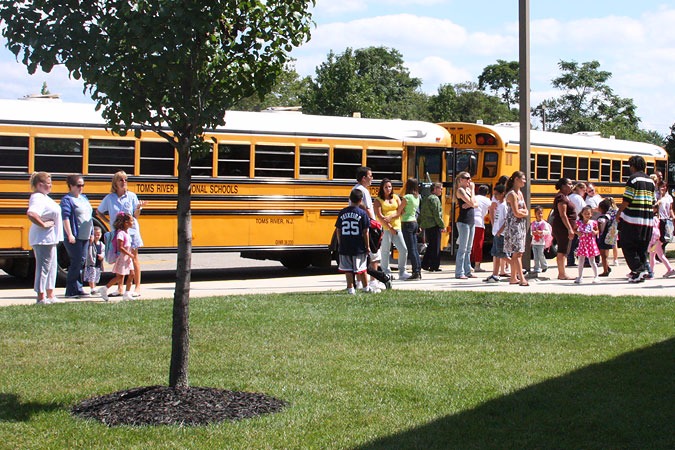
Toms River Regional school students. (Photo: TRRS)
Evenings spent explaining the construction projects, repairs and infrastructure needs of each school in the district are nearly over. For more than a month now, Toms River Regional School officials have been holding town hall sessions, one at each school, to explain the planned multi-million dollar referendum process and the needs each facility has.
The last of the town hall sessions are March 22, 6:30 to 7:30 p.m. at Joseph Citta Elementary and 8 to 9:30 p.m. at Walnut Street Elementary; and March 27, 6:30 to 7:30 p.m. at Cedar Grove Elementary and 8 to 9 p.m. at East Dover Elementary.
The town halls began February 6, part of the district’s lead-up to an Oct. 2 public referendum. The next step, according to the district’s timeline, is to finalize its projects and seek the state’s approval to hold a referendum.
The district is seeking to borrow, through the sale of bonds, enough money to fund district-wide improvements to schools that in some cases haven’t been renovated since they were built in the 1950s.
The list of top priority projects reaches $40 million, while the overall list of possible projects, according to the district’s facilities needs assessment made last school year, grows past $100 million.
What will be the final, specific list of projects the referendum will include? Generally speaking, examples include new handicap-accessible playgrounds, replacing carpet with tile around the district for health and cleanliness, turf fields for sporting facilities. Items to be funded would also likely include the repair of parking lots and driveways, HVAC unit replacements across the district, door and window replacements, plus items such as science labs and other education-centric projects.
Michael Kenny, grantsperson and media contact for the district, said in the coming weeks the district will be preparing its referendum application for state approval based on the public input and presentations made at the town hall sessions.
The town halls are also meant to explain how the school district’s Energy Savings Improvement Plan will help to pay for some of the upgrades and renovations identified in the school district’s facilities needs assessment. The ESIP, which is separate from what the referendum will fund, would address projects that could be seen as creating energy efficiencies for Toms River Regional
According to the district’s town hall presentation materials and website, those projects under the ESIP could include new boilers, new chillers, lighting upgrades and replacement of energy-inefficient components. The urgent priorities eligible to be self-funded through the ESIP total about $17.8 million, and according to the school district would create $1 million in annual energy savings. Those projects could begin over the summer and would not be part of voter referendum approval.
At this point, Kenny said, the district’s referendum website will be continually updated as the public discussions continue. Right now, the district is still preparing its project list and outline. The information campaign leading up to a referendum would also calculate the tax impact of the bonding. A second set of public information sessions would come once the state approves the referendum questions; according to the Toms River Regional School district, that approval could be in July.
The district is asking the state to approve a special school referendum for October instead of putting the referendum questions on the general election ballot for November.
For more details, the presentation materials and other documents associated with the referendum, Toms River Regional has created a section of its website for the “Rebuilding Our Schools Initiative,” at http://www.trschools.com/community/referendum.


Police, Fire & Courts
Toms River Man Sentenced to Prison for Assault, Eluding, Robbery, Threats







